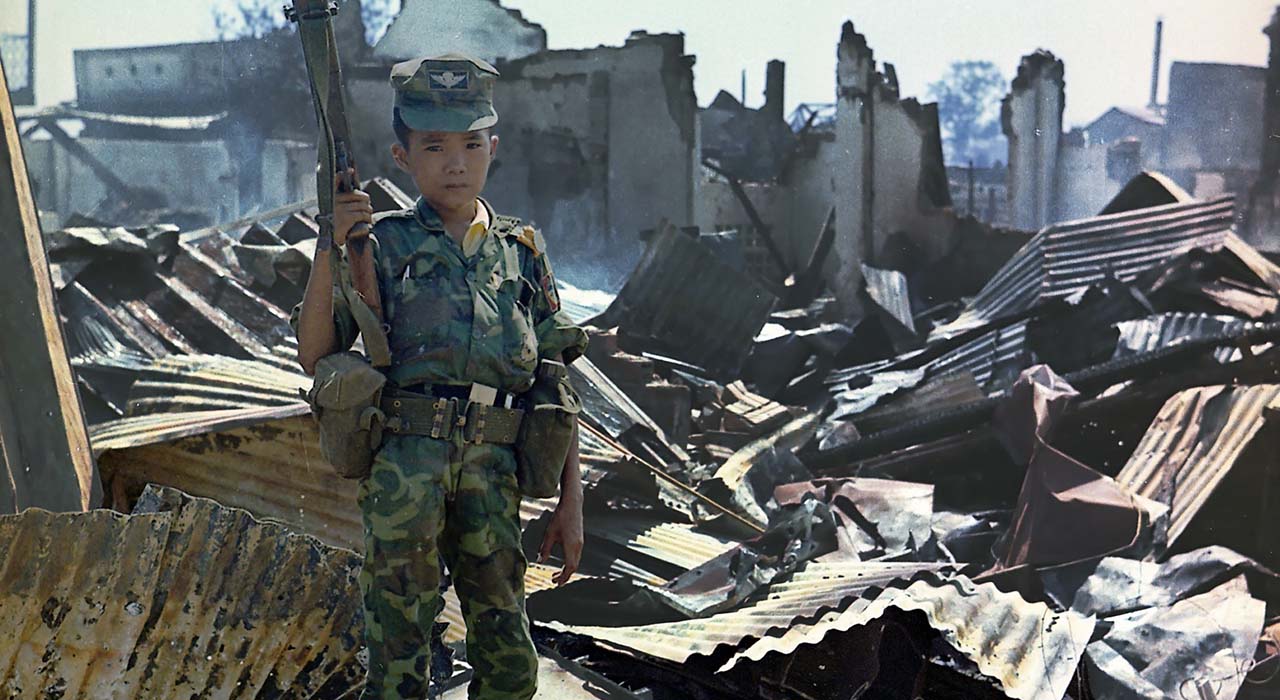
Recruiting Child Soldiers: Too Many Approaches and Too Little Success
By Wilson Dargbeh, Moysal Sana, Kshitij Sharan, and Will Shelling, the UBC MPPGA Global Policy Project Team, 25 April, 2022
Collaboration among UN peacekeepers, NGOs and CSOs in complex emergencies to prevent the recruitment of the "next child" poses many challenges.
According to UNICEF, in the period between 2005 and 2020, over “93,000 children were verified as recruited and used by parties to the conflict.” As a result, United Nations (UN) member states have prioritized efforts to incorporate declarations, protocols, and principles within peacekeeping missions' mandates to deescalate violence, protect civilian lives and prevent the recruitment of children in armed conflict. The Vancouver Principles (VP) are the latest in line with these voluntary commitments. The VPs were launched in 2017 and have since been endorsed by over 100 countries. The VPs provide a foundation for military components of UN missions to expand, clarify and revise their role in preventing the recruitment of children in armed conflict. However, the military does not and cannot operate in a silo when preventing the recruitment of children in armed conflict. They need to collaborate with other stakeholders, such as non-military components of the UN Mission, NGOs and CSOs, to mitigate the recruitment of children in armed conflict.
In UN peacekeeping missions, actors that collaborate to prevent the recruitment of children are from different organizational settings, and each possesses a unique lens of framing the issue of child recruitment. Findings from a research study we conducted revealed that those from the military component of the UN mission frame the issue as part of a broader civilian protection mandate that forms only one element of the overall mission mandate of peacekeeping. In contrast, CSOs members frame the issue through a humanitarian, child protection, or human rights context. Different approaches to issue framing amongst stakeholders creates friction in preventing the recruitment of children during armed conflict and protecting children during complex emergencies. Rattel and Webber's (1972) framework of this wicked problem can help us visualize the complexity of children's recruitment in armed conflict. They note, socio-economic and political systems and structural factors are always at play and ever-changing when it comes to the issue of 'children in armed conflict.' Those with different professional views will frame the problem differently. It has become very difficult to develop integrated strategies; when individuals do not understand and consider how others frame the problem.
This framing issue is further aggravated by a lack of 'human coordination' on ground in these missions. The differing deployment lengths between military and civilian components of these missions disincentivizes relationship building in the field and in headquarters. For example, personnel from the Canadian Armed Forces are currently deployed for a period of 6 months. While this may go up to 1 year for some other troop contributing countries, civilian personnel are usually deployed for 2 years or more. In addition, the civilian components have often been previously employed in similar roles in other contexts, hence possessing significant depth of expertise. Given the more frequent changes in military personnel, civil society operators are not incentivized to create long term relationships with them thus impacting effective civic-military coordination. One of the civilian respondents in our research study noted, "By the time we can start creating relationships with these people, their deployment period is over, and new people get deployed. Of course, we want to make relationships with them, but why should we if they are going to leave in 6 months."
Furthermore, there is an unhealthy level of distrust among stakeholders. In our interviews, several respondents from the civil society ecosystem voluntarily mentioned sexual atrocities allegedly committed by UN troops in communities they were supposed to protect. This issue created distrust among civil society actors of UN troops and continues to do so despite the number of such incidents decreasing over the last few years. This has led to some civil society actors questioning whether the UN troops should have any role in preventing the recruitment of children in armed conflict.
There is no one solution to these challenges in the prevention of recruitment of children in armed conflict. As no two missions are identical in either size, capacity, geographical terrain, socio-economic and political context or mandate, operationalization of the VP remains highly context specific. Each case must be carefully diagnosed, and a well-thought-out systemic plan for effective collaboration charted. Until then, challenges in collaboration and coordination will continue to impede the accelerated adoption and operationalization of the VPs.
RAUSI wishes to thank the authors of this article, from the University of British Columbia, for contributing this piece, and for kindly inviting RAUSI to contribute to their research. April 2022.
